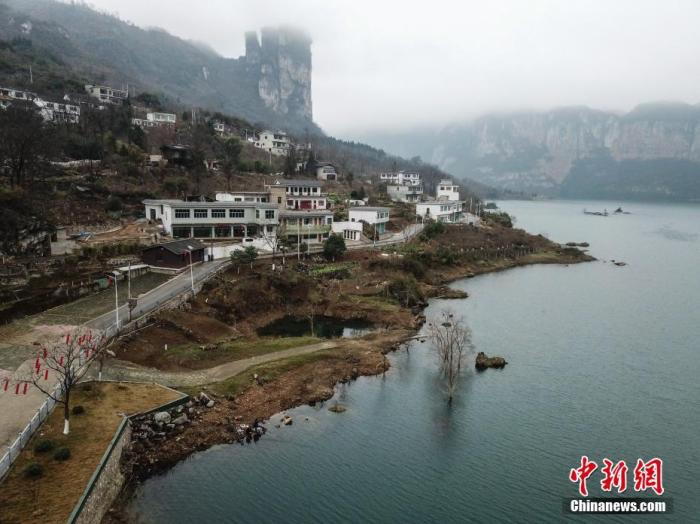(Observation of the NPC and CPPCC) How to inject revitalization momentum into these areas that have just torn off the "poverty label"?
China News Agency, Beijing, March 8 (Chen Xiangyu and Li Jingze) China's overall victory in the fight against poverty is a farewell to the past and a starting point for rural revitalization.
How to better realize rural revitalization?
During the National Two Sessions, the delegates and committee members brought their thoughts and suggestions.
The battle for poverty alleviation is "finished" in Guizhou. Li Jian, deputy to the National People's Congress and director of the Guizhou Provincial Poverty Alleviation and Development Office, said that there is still a lot of work to be done to improve the quality of public services and facilities.
He gave an example: "For example, when children go to school, they have to'read books' in the past, and how to'read well' in the future. This requires starting with teachers, improving facilities, etc., and so on in terms of medical treatment and housing."
Data map: Aerial photography of a corner of Huawu Village, Qianxi, Guizhou.
(Image and text irrelevant) Photo by China News Agency reporter Qu Honglun
In addition to "singles", expanding collaboration with "foreign aid" is also one of the directions for expansion.
Luo Qiang, deputy to the National People’s Congress and governor of Qiandongnan Prefecture of Guizhou Province, pointed out that the cooperation between the east and the west has played a significant role in poverty alleviation. "In the past, six provinces and seven cities helped eight cities and prefectures in Guizhou Province. We must seize this opportunity to further fix some good forms and continue to develop them."
Gong Jue Quzhen, a member of the National Committee of the Chinese People's Political Consultative Conference from Zari Township, Shannan City, Tibet, set his sights on the development of characteristic industries such as rural tourism and folk-custom economy.
When she accepted an interview with China News Agency, she opened up the chatterbox: planting tea trees, brewing Tibetan white wine, making Tibetan incense... All the ideas for getting rich are for one purpose-to eat "tourism rice."
According to a research project conducted by Tu Deng Kezhu, a member of the National Committee of the Chinese People's Political Consultative Conference and director of the Tibet Economic and Cultural Research Center of Tibet University, there is great potential for the protection, restoration and development of historical and cultural relics in ethnic areas, and the expansion of characteristic tourism resources in border and ethnic minority areas.
Speaking of Liangshan, Sichuan, the label of "poverty" for many years has been removed. How to inject "revitalization" momentum in the next step?
Dajiu Mujia, a member of the Standing Committee of the Chinese People's Political Consultative Conference from Liangshan Yi Autonomous Prefecture in Sichuan Province, introduced Liangshan's expansion direction to China News Service.
The first is to expand from supporting poor villages and poor households to the overall development of the overall rural development; the second is to expand from supporting poor households to develop production and employment income to cultivating regional advantageous industries and developing modern agriculture; the third is to expand from building houses and roads for poor households Rural construction activities, comprehensive improvement of rural human settlements and expansion; fourth, expansion from the "three guarantees" to the comprehensive improvement of rural public service capabilities.
These are all written into the "Proposal on Supporting the High-quality Development of Tourism in Ethnic Areas" submitted to the National Committee of the Chinese People's Political Consultative Conference.
China's economic and social development varies greatly from region to region, and even the same ethnic minorities have different situations.
There are 22 ethnic minorities in China with a population of less than 100,000. Maonan is one of them. Seventy percent of the population live in Huanjiang County, China’s only Maonan Autonomous County. This county town of less than 4,600 square kilometers is located on the border of Guangxi and Guizhou. .
In May 2020, with the withdrawal of Huanjiang County from the poverty-stricken counties sequence, the Maonan nationality also achieved the entire tribe's poverty alleviation.
Wei Zhenling, the only Maonan member of the National Committee of the Chinese People's Political Consultative Conference, said that in this year's Huanjiang Maonan Autonomous County government work report, there have been many long-term plans to expand the results of poverty alleviation.
On the one hand, it is to "improve the quality" of the results that have been achieved, such as implementing various safeguards, improving the quality of policies, strengthening management services after relocation, and increasing support for industries formed during the implementation of the poverty alleviation strategy.
On the other hand, it is looking for new development opportunities, such as continuing to in-depth build agricultural specialty product brands, promoting and expanding Internet sales, and making good use of the high-speed rail construction projects implemented by the state in Huanjiang County to vigorously promote the high-speed rail economy.
(Finish)

